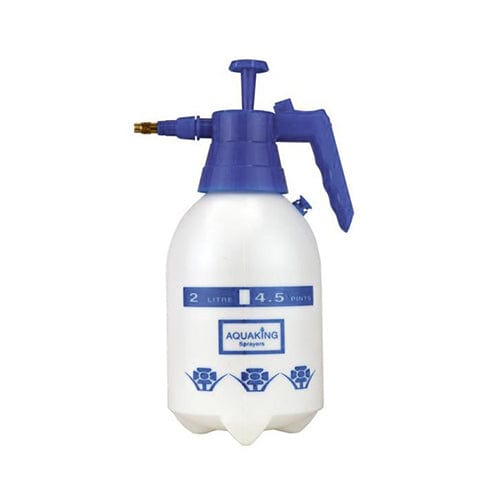Thrips are bothersome insects that can infest your plants and ruin all your hard work. Luckily, there’s ways and means to control them and stop them from coming back. Read on for advice and tips on how to get rid of thrips.
What are Thrips?
Thrips are very small flying insects that are most commonly found to be green or black. Whilst they are capable of flying, they’re not very good at it, making them quite easy to identify despite being so elusive. They are commonly found hiding on the undersides of your leaves, and can jump off your plants making them harder to spot. Due to their tendency to evade sight, it’s recommended to use Guard’n’Aid Insect Catchers in your grow space so you can catch and identify these pests.
Thrips will lay thousands of eggs in the crevices of the leaves, making them very easy to miss. As these are quite difficult to physically see, in many cases, aphid attacks go unnoticed for extended periods of time until physical damage is noticed on the leaves.
An infestation of thrips can be very difficult to eradicate from your grow space due to their ability to reproduce, and evade detection. A heavy infestation can cause serious, irreversible damage to your crops within just a day or two. Another key concern surrounding thrips is their tendency to spread viruses.

What do thrips do?
Thrips effectively attack and damage the surface of the leaf so they can feed from the sugary juices within the plant. An easy way to identify thrip attacks is to look for a silvery appearance on the surface of the leaf. Make sure you check both the top side, and underside as this is where they are most commonly spotted. Prolonged exposure to thrips can cause the leaves to dry out, curl and die.
The life cycle of a thrip
As thrips can be very difficult to eradicate, understanding their life cycle is essential for understanding when to treat an infestation and effectively manage it.
Much like aphids, thrips do not need to reproduce sexually. Just one thrip can form an entire colony, and in many cases only one sex is found to be present in a colony.
Again, like an aphid, life begins in the form of an egg, buried within the crevices of your plants’ leaves. Once hatched, over the course of seven days, thrips will typically be found hiding on the undersides of the leaves as they go through various developmental changes. From here, they will in most cases drop off the plant and burrow themselves into the root zone of the plant whilst they pupate. The pupal stage can last from a couple of days, up to a few weeks.
Once the thrips have hatched into their adult form, they will fly to the nearest plant matter and begin to feed, and reproduce, repeating the cycle again.
How to treat a thrip infestation
Step 1 – Clean with water Just like when dealing with aphids, give the plant a good wash before applying your chosen pest management solution. Washing the plant can help reduce the number of eggs present on the leaves, as well as reducing the number of adult thrips that are actively feeding on your plants.
Step 2 – Use a plant wash or insecticidal spray Skram, Guard’n’Aid Thrip and Neem Oil are great choices for tackling your thrips. Both Skram and Neem Oil are natural, organic alternatives to Guard’n’Aid Thrip which is a pyrethrum-based pest control solution. Whichever you opt for, ensure that all leaves and stems are heavily coated.

Maven Skram Plant Wash
|

Guard'n'Aid Thrip
|

Dr Forest Neem Oil
|
Step 3 – Use a physical barrier to help interrupt the life cycle During the pupal stage, larvae will burrow into the root zone before hatching, and crawling back up the plant to start feeding. Adding a thin layer of CANNA Aqua Clay pebbles to the top of your substrate can make it much harder for thrips to break through and attack your plants. Alternatively, a thin layer of plastic sheeting physically covering the opening of the pot can help prevent the thrips from breaking through.
Step 4 – Predator bugs Just like we discussed in our blog on controlling an aphid infestation, ladybirds work wonders when dealing with a thrip attack. Ladybirds can eat up to 1000 aphids a day, making them a fantastic natural alternative to using pesticides. This can be particularly effective in outdoor environments where you are concerned about pesticides causing negative implications to the beneficial insects and wildlife surrounding your plants.

CANNA Aqua Clay Pebbles
|

Guard'n'Aid Pest Pistol
|

Aquaking Pressure Sprayer
|

SHOP NOW READ MORE




